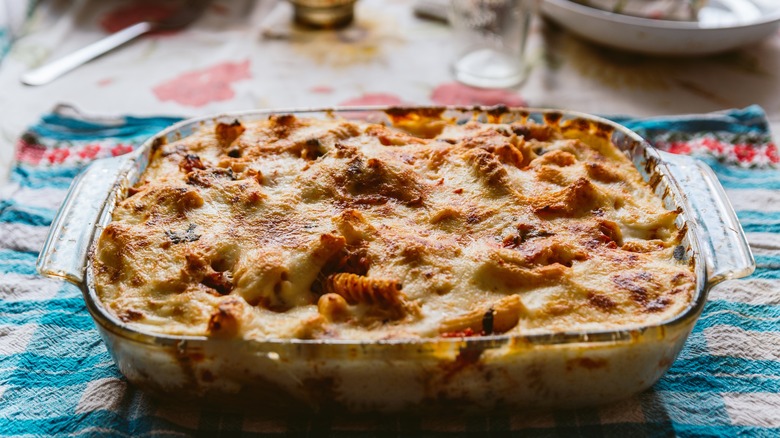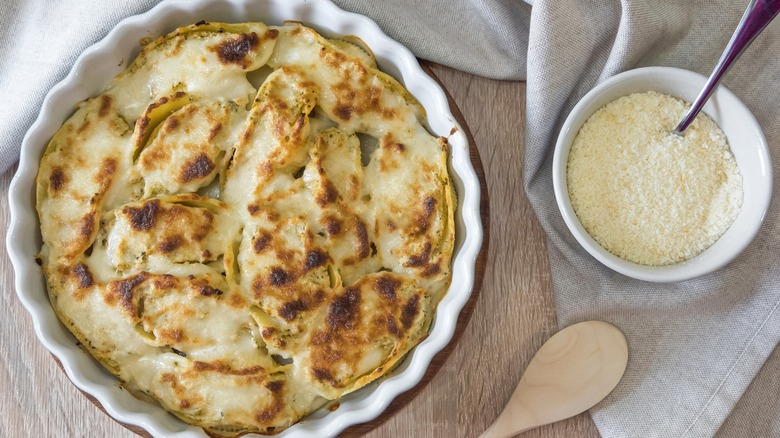The Traditional Italian Dishes That Inspired Classic Baked Ziti
What Americans think of as Italian food is often not fare you'd typically find in Italy. This probably wouldn't surprise most people; Olive Garden breadsticks may be tasty, but they're not generally thought of as authentic. You won't find spaghetti and meatballs in Italy, nor will you find chicken parmesan (although eggplant parmesan is a Sicilian dish). Heck, even cioppino originated in San Francisco. This doesn't mean these dishes aren't Italian, but it does mean they're Italian-American, created by immigrant communities to the United States in an example of beautiful fusion cuisine.
One of the classic Italian-American dishes is baked ziti. Essentially an Italian-American casserole consisting of pasta, red sauce, cheese, and other add-ins like proteins or vegetables, baked ziti is a simple dish that pretty much anyone can make and is universal enough that it's hard to think of anyone who'd actively dislike it. But just because it was created in America doesn't mean some very traditional Italian dishes didn't inspire baked ziti. In particular, two stand out as inspiration: Pasta al forno and pasta au gratin.
Pasta al forno just refers to any baked pasta dish
Technically, al forno is Italian for baked, so pasta al forno refers to any baked pasta dish. This means that not only would baked ziti be considered pasta al forno, but so would something like lasagna. (The first recipes we can recognize as looking like pasta al forno didn't come from Italy, but from Greece, and were forms of lasagna.)
In practice, though, pasta al forno is typically not used to refer to either lasagna or baked ziti — at least not in Italy. In Italy, pasta al forno pasta shapes like rigatoni or cannelloni are preferred. Nevertheless, this is the closest relative to baked ziti, and a lot of versions of baked ziti look pretty spot on to traditional pasta al fornos, just with a change in the pasta itself. But it's not the only dish that inspired baked ziti in America.
Pasta au gratin is a Neapolitan classic
Compared to pasta al forno, pasta au gratin is much less universal. It's typically considered a Neapolitan dish, meaning it hails from Southern Italy (Naples is located on what would be the laces of the Italian boot). It's similar to a baked mac and cheese more than to anything else, made with a bechamel sauce, mixed cheeses, and pasta options like rigatoni, macaroni, or — you guessed it — ziti. While some mac and cheeses are baked, pasta au gratin always is, and it's that exterior crunch contrasted against the rich, creamy bechamel inside, which gives it its signature texture.
It seems likely that baked ziti descended from a combination of both these dishes. Ziti pasta itself was originally cut to be served at bridal dinners, but somewhere during Italian immigrants' transition to America, baked ziti turned into an everyday dish. Still, it didn't exactly venture far from its roots. So, while you may not be able to find baked ziti in Italy, you can be sure you'll find some dishes that seem pretty similar.


